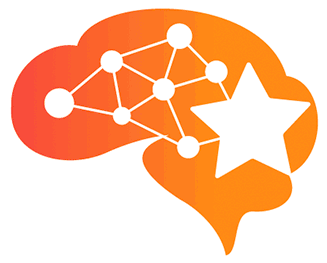Inbound marketing, in its most basic form, is reaching the appropriate people at the proper moment with the correct message. You may have the ideal messaging and target audience, but you won’t see any traffic or conversions regardless. The fact is that if you aren’t in front of prospects when they want to hear from you, your message will be discarded. The secret to your marketing problems may be as straightforward as three little words: buyer intent data. Today, we’ll give you an overview of intent data and explain where to get it, what to do with it, and how the marketing environment has evolved because of it.
What Is Buyer Intent Data?
Buyer intent data is a collection of behavioural signals amassed from a variety of digital sources. You may gain insight into the intention of your site’s users from several sources, including social media and ad engagement, as well as search engine queries specific to your industry’s keywords. First-party data and third-party data are typically divided into two categories. Let’s look at some of the distinctions between them.
First-Party Intent Data
Internal, or first-party, intent data is information your company gathers. This might include log files from your website and the pages they visit, who is engaging with what marketing materials, and any other data you can discover within your own resources.
Third-Party Intent Data
Third-party data, often known as off-site or external data, is collected by a site that you do not control. There are several aggregates to choose from; we’ll look at some of the most popular:
ZOOMINFO
You’ve undoubtedly heard of ZoomInfo as a business contact information database. The firm has expanded its platform, adding intent signals to it. ZoomInfo displays a live feed of data about businesses’ online behaviour with regard to specified themes, which you choose. These topics might be as broad as industry keywords like “marketing software” or as narrow as a particular platform such as HubSpot.
You can access detailed information about each firm, including Audience Strength, which indicates the proportion of personnel looking for a certain term. Counting on your understanding of Google Ads and SEO, you can calculate a variety of factors to optimise the performance of your ads. The Signal Score and Signal Count are measures of how interested consumers are in your keywords. On a scale of 0 to 100, these figures indicate the volume and frequency of certain searches. You may also check up on company developments, such as expansions or executive hiring decisions, by using a Scoops intent data feature.
BOMBORA
Bombora is purely a business intent tool. Because this is the company’s sole focus, it is renowned as the top intent tool. However, it does not have the database functionality that is included with ZoomInfo.
LEADFEEDER
Leadfeeder is a tool that collects and organises your website data. It offers information about who visited your site, how they used it, and various other useful information.
How Can You Use Intent Data?
Creating and automating targeted, intuitive buyer journeys is difficult for many B2B marketers since long sales processes are largely reliant on permission from purchasing teams with different priorities and pain points. Using intent data enables you to send highly targeted communications to contacts throughout an organisation that may be involved in decision making, which is a sophisticated form of lead nurturing. You may use intent data at each stage to attract new prospects as well as move existing candidates through your funnel when prospects progress from awareness to consideration and then decide.
Awareness
The buyer has become aware of a problem that requires solving at the awareness stage of the buyer’s journey. Intent data can help you identify issues that buyers are having. More than ever before, we have seemingly unending amounts of data at our fingertips. It’s all too easy to get caught up in all the data and have a hard time deciding what matters most. It’s the immediacy of intent analysis that gets me. You may see real-time information on where and when your target market is looking for goods or services similar to yours, allowing you to position yourself as a potential solution before. This type of top-of-funnel data, which is often obtained from third-party sources like the ones previously described, comes before you’ve contacted prospects.
Consideration
At the consideration stage, the buyer has discovered the underlying problem and begun looking for possible answers. Intent data may assist you in determining what content is resonating with potential consumers at this point. Some customers may appreciate a lead-nurturing email campaign, while others may respond better to longer-form content like an e-book or webinar. Adjusting your strategy means including the appropriate keywords from the previous stage with the correct sorts of material.
You may monitor consideration-stage data using a variety of marketing and sales tools. HubSpot, MailChimp, and SalesLoft are only a few of the tools that your team may already use that include this capability. They all have their own characteristics, but they’re all capable of gathering email interactions and other crucial buyer engagement data.
Decision
Buyers in the evaluation stage have discovered their issue and chosen a type of solution, and now they’re comparing services. During the decision period, your primary goal is to distinguish yourself as the finest alternative for the problem your prospect is interested in. Intent data might help you figure out which pain points your customers are experiencing and what subjects and keywords you could connect to particular solutions.
Tailoring the language your team uses to match with your purchasers’ pain points on product pages, during middle-of-funnel nurturing efforts, and even in early interactions that your business development staff is having with them will demonstrate to prospects that your solutions are tailored to their unique challenges. This will help you optimise the hand-off between teams. It’s critical to ensure that your marketing and sales teams are properly aligned and utilise the same language. It shows clients that you’re not just another business trying to sell them something when you turn contacts from marketing to sales with ease. By using intent data to discover the most relevant keywords, you’ll ensure that your prospects feel cared for and that you comprehend their problem.
How Has Buyer Intent Data Changed Inbound Marketing?
All of this information is available to you, in case you’re looking for it. Inbound marketing focuses on informing, educating, and assisting potential consumers. Buyer intent data bridges the gap between you and your customer, allowing you to be right in front of them when they need assistance. Intent data helps you understand what concerns your target consumers are facing, when they’re having them, and where and how they’re seeking answers.
Using a highly targeted approach to inbound marketing, you can learn how to communicate with potential consumers at every step of their purchase process. Intent research can and should be used to inform all aspects of digital marketing strategy. For example,
- Increasing the number of visitors to your site by properly matching your keywords with what your customers are searching for
- Because you’ve discovered that your target audience prefers to consume information in that manner, more case studies should be created.
- Aligning your sales and marketing activities to ensure that everyone on your staff is on the same page about who to pursue.
In the ever-changing marketing and sales environment, it’s critical to be where your prospects are when they need you. Using buyer intent data to influence your inbound marketing approach allows you to create more meaningful and impactful connections with customers.





